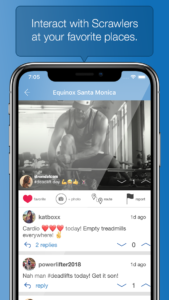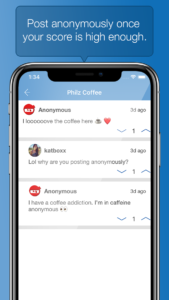Glowdot launches Scrawl for iOS
Glowdot is pleased to announce the launch of Scrawl for iOS.
Scrawl is a location based social network based around user created places. Users can create a place anywhere in the world, and post messages to that place.





Aside from being a pretty neat idea, we actually launched this app to demonstrate a few critical concepts that many first time (and even some fairly experienced!) mobile entrepreneurs might not be aware of. Among them:
Delayed permission requests
One of the surest ways to lose a new user is to ask for permissions too soon — or worse, immediately upon first launch of the app. Even if you are lucky and don’t immediately cause that user to delete your app, you will almost certainly end up with that user denying your request.
The reason for this is pretty simple, if not immediately obvious. A new user really doesn’t know much about you or your app at all. And you certainly haven’t earned their trust yet. But here you are, asking for access to their photos, contacts, location…. wouldn’t your first response be, “wait, who are you and what are you going to do with this information?”
And while the push notifications permission might not be invasive in terms of privacy, it is invasive in terms of annoyance factor for many apps, as it has been chronically abused in the past. Consequently, most users tend to answer “no” unless they have a compelling reason to say “yes”.
The worst part of all this is that once a user says no, its really hard to get them to go into the settings app and change their answer to yes. Primarily because most users don’t even know how do to that even if they wanted to.
A much better approach is to delay asking for those permissions until you have spent a little time with that user, and given them a good reason to accept the request. In Scrawl, we do this in a few simple ways:
- Push notifications are not requested until you perform an action for which you might receive a notification. In Scrawl, you can receive notifications when users reply to you, or post in a place you have favorited. So we don’t ask for push permission until you post something, or favorite a place.
- For location permission, we start users off as if they were sitting in our office in Santa Monica, CA. At the top of the “nearby places” list, we let them know they are looking at places near us, and offer them the option of sharing their location so we can show them places near them. In this way, we allow the user to request that we accept their share, rather than intrusively ask them where they are.
- For camera and photo library permissions, we ask only when the user requests to share an image. This isn’t that interesting, however, as most apps work like this. It is, in fact, default behavior in iOS apps.
Aside from waiting to ask, we employ one more strategy here to maximize acceptance of permission requests: we ask the user ourselves before we request that iOS make the request. This is a little more advanced a concept, but it is based on the fact that once iOS itself asks you for permission, it will never ask again — the user MUST change their answer in the Settings app. So instead of requesting the push notification permission, for example, we pop up an explanatory dialog explaining why we want it, and asking the user if they are interested in granting it. If they say no, we don’t ask them again for a while, giving them a chance to get more comfortable in the app, and giving us a chance to earn trust. If they say yes, then we tell iOS to go ahead and request the permission. If they said yes to us, there’s a pretty good chance they’ll say yes to iOS. So when the request is made, even though its the last time it will be made, the odds that it will be accepted is much, much higher.
Delayed log in requests
As a general principle, we like to delay asking a user to log in or sign up as long as we possibly can. At a bare minimum, we try with all our might to avoid requesting users log in immediately upon launching the app! For some apps, this is inevitable, for most situations, there is a set of functionality that is perfectly reasonable to offer to anonymous users.
In Scrawl, for example, users can search places and read posts, look at photos, and even report objectionable content without logging in. But to create a place, post a message, upload a photo or vote on any content, they need to log in. When a user attempts to do one of those things, that’s when we request they log in or sign up — not before.
Content moderation
One of the most important things to consider when creating a social network, and especially one which centers on user generated content (UGC), is content moderation. You need to have a way to make sure objectionable content is quickly removed and malicious users are removed from the system. I won’t go into detail about our moderation system here for obvious reasons, but we have created a model for self-moderation that allows objectionable content to be filtered out of the system until such a time that a human moderator can permanently remove it and moderate the offending user accounts. It’s a pretty smart system, and one that we believe fixes this major problem which has plagued other similar apps in the past.
If you’d like to see Scrawl in action, we’d love for you to check it out on iOS here:
An Android version is coming soon!
No Comments